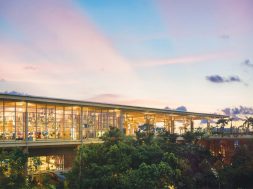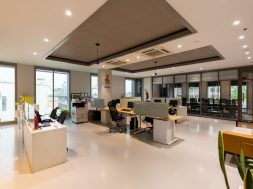Bengaluru T2 -The world’s largest LEEDPlatinum airport terminal
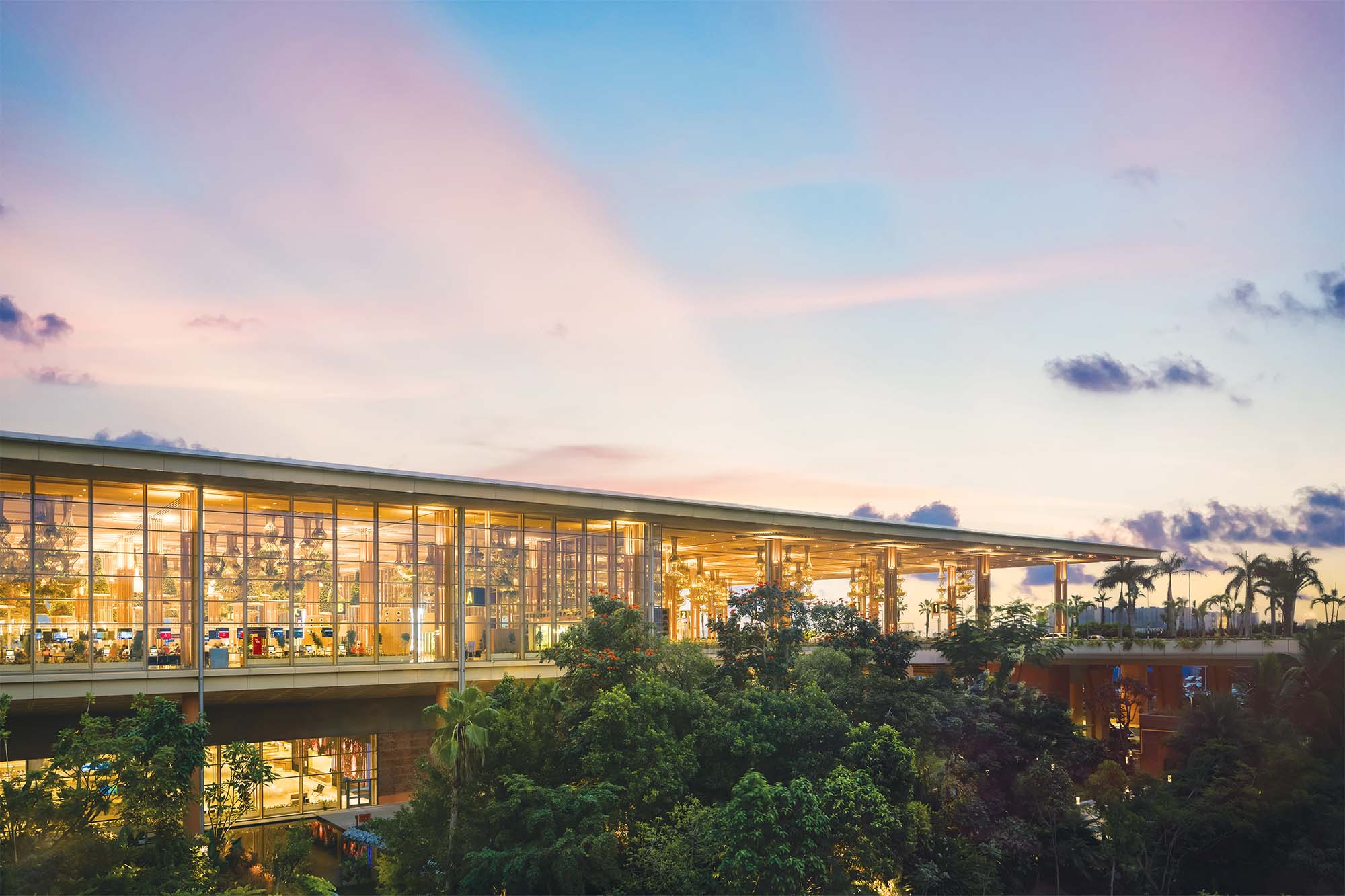
T2 stands as the world’s largest terminal pre-certified as a LEED Platinum building by the US Green Building Council, complemented by the IGBC’s Platinum certification, showcasing a commitment to sustainable architecture; thoughtful design, featuring expansive outdoor spaces that reflect a foresight in wellness.
The unveiling of Terminal 2 at Kempegowda International Airport, Bengaluru, stands as a momentous occasion for the city and airport design globally. This 255,000-square-meter terminal augments the airport’s capacity by 25 million passengers annually and redefines the conventional airport experience. From its architectural design to sustainable features, Terminal 2 reflects a harmonious blend of Bengaluru’s rich history, cultural vibrancy, and a forward-looking ethos design by SOM.
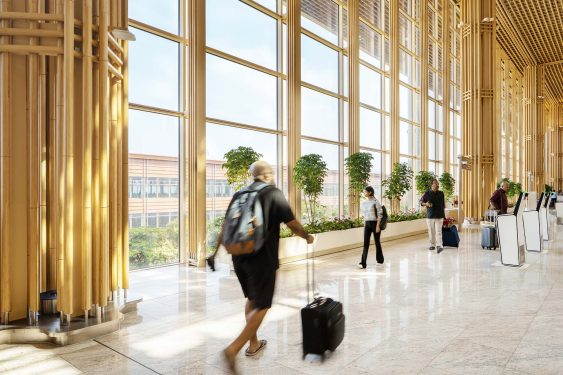
The architectural narrative of Terminal 2 is a departure from the mundane, emphasising a holistic experience for passengers. Collaboratively designed with Grant Associates and Abu Jani/Sandeep Khosla, the terminal is a living tribute to Bengaluru’s moniker as the “garden city.” A continuous band of outdoor, landscaped spaces, colloquially called the “terminal in a garden,” weaves through interconnected buildings clad in brick, engineered bamboo, and glass.
This lush landscape, adorned with indigenous flora, multilevel paths, and bamboo-clad pavilions, serves as a prelude to Karnataka’s scenic beauty for arriving passengers and a lasting memory for departures. By veering away from the traditional airport architectural language, Terminal 2 invites travellers to immerse themselves in a unique experience, transcending the mere act of transit.
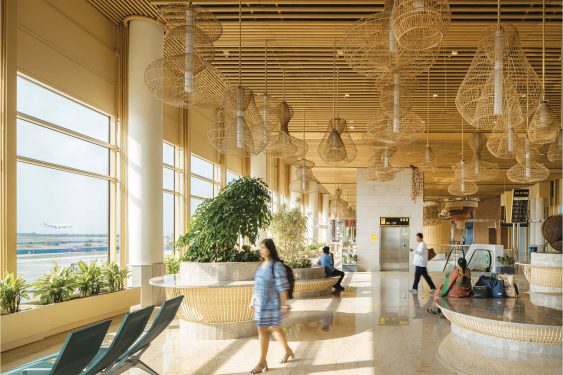
Integration of nature within the terminal
The integration of nature is not confined to the external spaces alone. Terminal 2’s interiors echo the natural aesthetic of the forest belt. Hanging plantings, skylights filtered through bamboo lattices, and bamboo-clad steel members forming columns contribute to a sensory experience. The orthogonal form of the structure, a deviation from typical airport roof designs, creates a sense of lightness and openness within the terminal.
Custom furnishings made of traditional woven rattan and locally sourced materials add warmth and comfort, fostering a welcoming environment often absent in large-scale public infrastructure. The retail section introduces indoor waterfalls inspired by Karnataka’s natural elements, serving as signature focal points while ensuring a cooling effect.
Structural ingenuity and sustainability
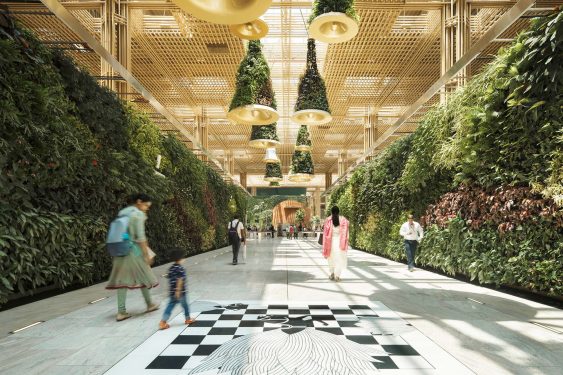
Terminal 2’s structural design is proof of both sustainability and efficiency. The terminal roof, one of the lightest at this scale globally, is constructed entirely from domestically produced materials using local construction technology. Using long-span steel moment frames and bamboo-clad columns achieves both structural efficiency and sustainability.
The modular design, consisting of a uniform grid of reinforced concrete moment frames, allows flexibility to accommodate the evolving needs of the aviation industry. Incorporating skylights, hanging planters, and landscaping at multiple levels underscores the thoughtful integration of sustainability into the terminal’s structural framework.
A multimodal transit hub redefined

The 123,000-square-meter multimodal transit hub is a transportation nexus and a vibrant space that blurs the lines between the airport and the city. Serving as an outdoor retail and entertainment area, this hub introduces a new concept for airports, echoing the essence of Terminal 2. Covered by a translucent, high-performance canopy, the hub features lagoons recycling stormwater runoff, creating a serene atmosphere.
Efficiency is paramount, with elevated pedestrian bridges reducing walking distances and making the airport walkable. The hub’s rectilinear form complements Terminal 2, ensuring efficient site use.
A sustainable and wellness-centric future
Sustainability is embedded in Terminal 2’s DNA. Recognised as the largest terminal globally to receive pre-certification as a LEED Platinum building by the USGBC and the IGBC Platinum certification by the Indian Green Building Council, Terminal 2 exemplifies a commitment to green architecture. Outdoor areas designed with wellness in mind, extensive use of solar shading, intelligent building systems, and reliance on renewable energy showcase a forward-thinking approach to environmental stewardship.
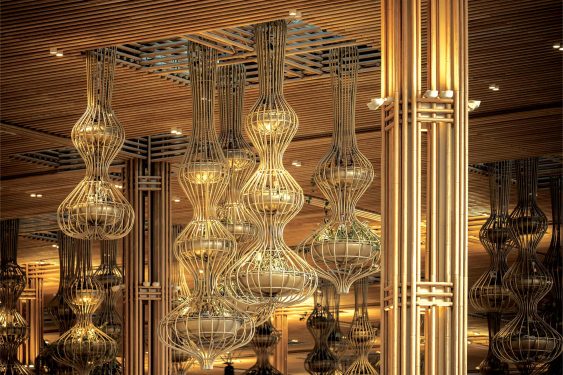
In the post-Covid-19 era, the wisdom of integrating generous outdoor spaces into an airport is more evident than ever. Terminal 2’s commitment to capturing, treating, and reusing rainwater, coupled with a design that minimises pollution, positions it as a beacon for sustainable and resilient airport infrastructure.
Terminal 2 at Kempegowda International Airport, Bengaluru, is not just a transportation hub but a testament to innovative design, sustainability, and a harmonious integration of nature and culture. As the world grapples with the challenges of the 21st century, Terminal 2 stands as a beacon of inspiration for the future of airport architecture and design.
For more info visit: https://www.som.com/
Cookie Consent
We use cookies to personalize your experience. By continuing to visit this website you agree to our Terms & Conditions, Privacy Policy and Cookie Policy.
